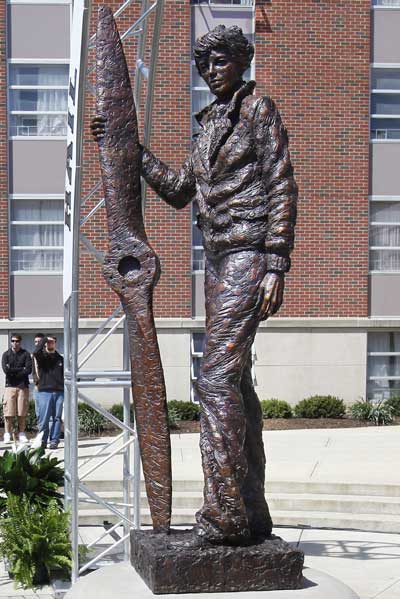 A larger-than-life sculpture intended to inspire students to pursue their dreams while connecting the campus to its early history in flight was unveiled April 16 at Purdue University in West Lafayette, Indiana.
A larger-than-life sculpture intended to inspire students to pursue their dreams while connecting the campus to its early history in flight was unveiled April 16 at Purdue University in West Lafayette, Indiana.
The sculpture of aviation pioneer Amelia Earhart, who encouraged women to follow careers in whatever field they chose, was made possible by a gift from alumna and Purdue trustee Susan Bulkeley Butler. The unveiling ceremony was at Earhart Hall, named for Amelia Earhart, who worked at Purdue from 1935 to 1937 as a career counselor for women students and an adviser to the Department of Aeronautics.
The eight-foot sculpture, by California artist Ernest Shelton, depicts Earhart standing and holding a propeller.
The first woman to pilot an airplane across the Atlantic and holder of many aviation records, honors and awards, Earhart was recruited to Purdue by then-president Edward Elliott, who was impressed by her spirit of adventure as well as her message to women.
“(She) represents better than any other young woman of this generation the spirit and courageous skill which may be called the new pioneering,” Elliott said.
In April of 1936 an Amelia Earhart Fund for Aeronautical Research was created with the Purdue Research Foundation. The fund bought the $80,000 Lockheed Electra that became known as Earhart’s Flying Laboratory. With navigator Fred Noonan, Earhart disappeared July 2, 1937, near Howland Island in the Pacific Ocean, while attempting an around-the-world voyage aboard the Flying Laboratory.
